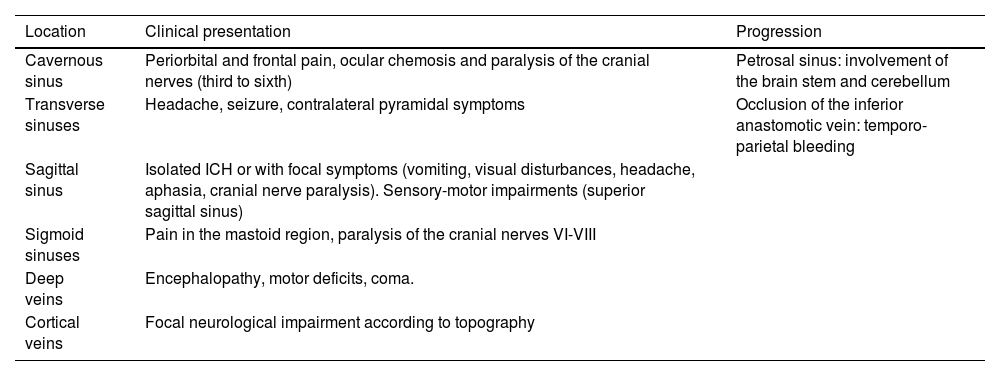Cerebral venous thrombosis is part of the so-called thrombosis in unusual sites. It is defined as an occlusion in the cerebral venous territory. Its incidence is progressively increasing, especially in developing countries. It is more frequently observed in young women, with hormonal factors such as pregnancy or hormonal contraception being significant risk factors in the development of this condition. The clinical presentation will depend fundamentally on the topography of the thrombosis, with a confirmatory diagnosis based mainly on imaging tests. The treatment generally consists of anticoagulation, and other options may be considered depending on the severity of the case. Overall, the prognosis is better than that of other intracranial vascular disorders. This review describes the current evidence available regarding cerebral venous thrombosis.
La trombosis venosa cerebral forma parte de las llamadas trombosis en sitios inusuales. Se define como una oclusión en el territorio venoso cerebral. Su incidencia se encuentra en aumento progresivo, especialmente en países en vías de desarrollo. Se observa con más frecuencia en mujeres jóvenes, siendo los factores hormonales como el embarazo o la anticoncepción hormonal factores de riesgo principales en el desarrollo de esta patología. La clínica va a depender fundamentalmente de la topografía de la trombosis, con un diagnóstico de confirmación basado principalmente en las pruebas de imagen. El tratamiento consiste generalmente en la anticoagulación, pudiendo plantearse otras opciones según la gravedad del cuadro. En general, el pronóstico es mejor que el de otros trastornos vasculares intracraneales. En esta revisión se describe la evidencia actual disponible acerca de la trombosis venosa cerebral.
Article
Diríjase desde aquí a la web de la >>>FESEMI<<< e inicie sesión mediante el formulario que se encuentra en la barra superior, pulsando sobre el candado.

Una vez autentificado, en la misma web de FESEMI, en el menú superior, elija la opción deseada.

>>>FESEMI<<<









